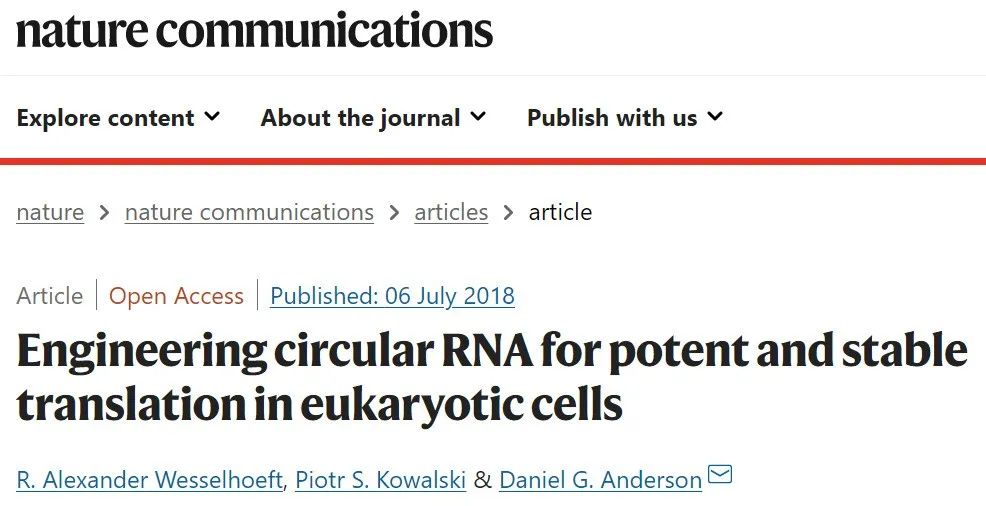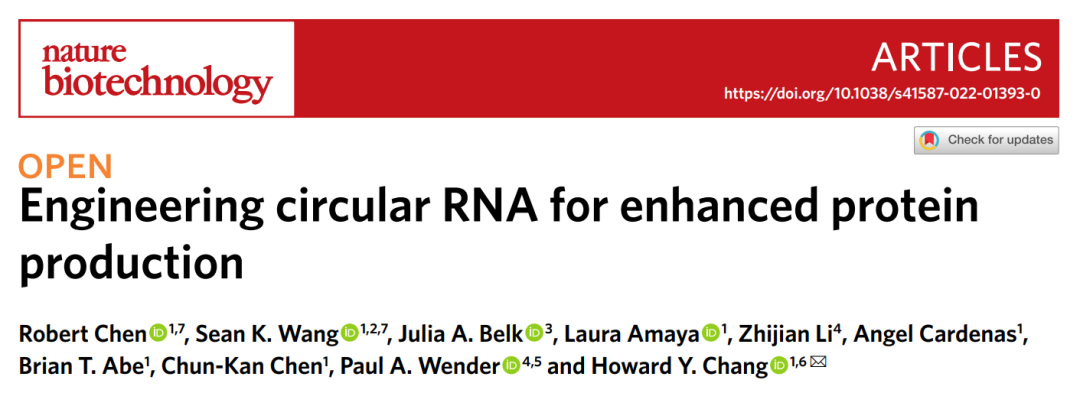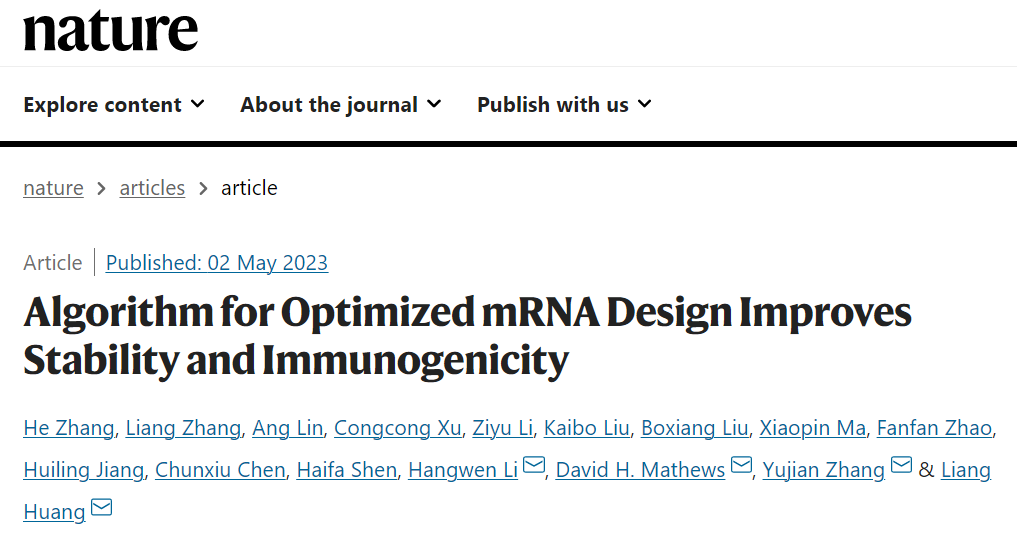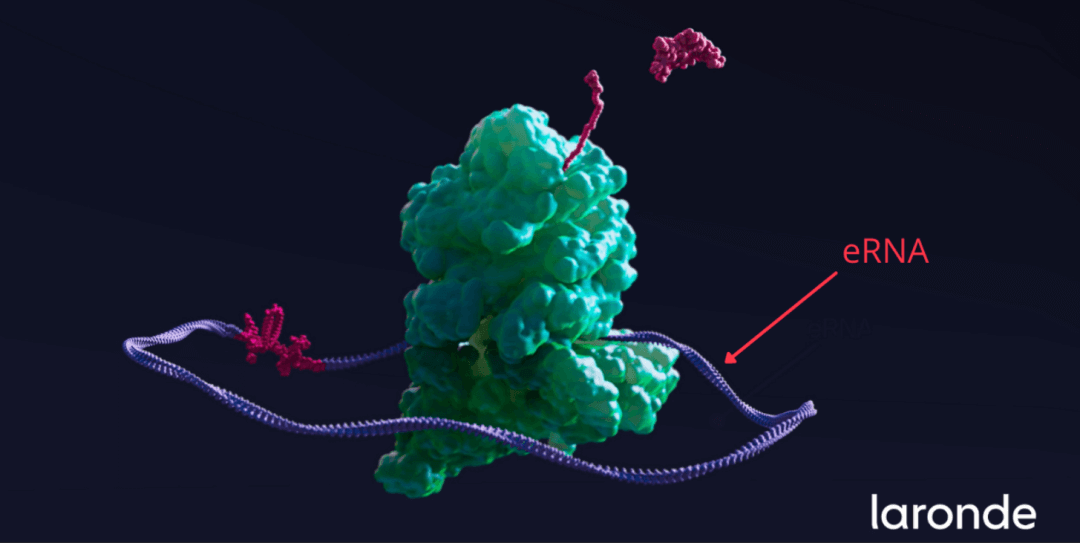RNA-based vaccines are the heroes of the COVID-19 pandemic, setting the record for the fastest vaccine development time in history, taking just one year from development to FDA approval. More recently, mRNA technology has received Nobel Prize recognition, with Katalin Kariko and Drew Weissman winning the 2023 Nobel Prize in Physiology or Medicine for their discovery of nucleoside base modifications that led to the development of effective mRNA vaccines against COVID-19.

It has long been recognized that RNA technology possesses a critical limitation: RNA typically exists in a linear configuration, which results in a relatively short lifespan for this form of mRNA. Within a few hours, intracellular nucleases degrade these molecules. While the transient nature of RNA is not problematic for vaccines, as it only requires a brief period to encode proteins that elicit an immune response, it poses challenges for most therapeutic applications where prolonged RNA stability is desirable. Circular RNAs (circRNAs), with their covalently closed ring structure, offer a significant advantage by protecting themselves from nuclease degradation, thereby enhancing stability and extending their lifespan. Theoretically, even at low dose levels, circular RNA could enhance therapeutic efficacy.
Discovery and development of circular RNA
Circrnas were first discovered in 1976, but were thought to be by-products of mRNA splicing errors in cells. In 2013, two research papers on circular RNA were published in the journal Nature at the same time, pointing out that circular RNA is a kind of non-coding RNA with regulatory effect, and regulates the expression of other genes by acting as a sponge of miRNA. This makes circular RNA, which has been silent for more than 30 years, striking and becoming a new generation of star molecules, and has been found to play an important regulatory role in cell differentiation, tissue homeostasis, disease development, and immune metabolism.
In July 2018, a key turning point in the history of circular RNA development, Daniel Anderson and others from the Massachusetts Institute of Technology (MIT) published a paper in the journal Nature Communications, demonstrating for the first time that engineered circular RNA can stably and efficiently express proteins in eukaryotic cells. The novel application of foreign circular RNA for protein expression in eukaryotic cells has also proved that circular RNA is an effective substitute for linear mRNA.

Circular RNA entrepreneurship boom
Based on this research, Daniel Anderson founded Orna Therapeutics, the world's first company to develop new therapies using circular RNA. The company's core technology lies in its development of RNA cyclization technology, where they achieved an ultra-long circular RNA construct to cyclify the 12,000 nucleotides long mRNA encoding Dystrophin, which is deficient in Duchenne muscular dystrophy (DMD).
But Orna isn't the only startup working on cyclization, there are other companies taking a different approach to building circular Rnas. Torque Bio, for example, puts the instructions for making circular RNA into viruses and splices them inside their cells to make it. Chimera Therapeutics uses genetically engineered bacteria to produce circular RNA.
In addition, there are two startups from China, Cyclocode Biology and Cremate, which developed new RNA cyclization technologies in separate papers published in preprints last year.
Advantages and progress of circular RNA
Talking about the advantages of circular RNA, Howard Chang of Stanford University argues that you can get a durable enough protein with just one injection.
In July 2022, Zhang Yuanhao's team published a paper in the journal Nature Biotechnology, which showed that through multiple optimization designs, the protein yield of successful circular RNA translation was increased by hundreds of times, which can achieve effective and durable protein production in vivo.

Zhang, along with mRNA pioneer Drew Weissman, winner of the 2023 Nobel Prize in Physiology or Medicine, and others, founded A company called Orbital Therapeutics, which closed a $270 million Series A round in the first half of this year.
Proponents of circular RNA technology expect it to become the RNA platform of choice for the pharmaceutical industry, potentially unlocking the next generation of vaccines, therapies for rare diseases, and anti-cancer drugs.
When developing circular RNA as a therapy, we need to remove the extra sequence in the ring formation process to avoid causing an unnecessary immune response. Lingling Chen, a researcher at the Center of Excellence in Molecular and Cellular Sciences at the Chinese Academy of Sciences, said it really depends on the specific way the circular RNA is built. Her research, published in the journal Molecular Cell in November 2021, shows that when building circular RNA, the sequence left behind by the self-splicing motif distorts the RNA fold, resulting in an irregularly structured ring structure that triggers an immune response.

However, in some cases, an immune response is desirable. In March 2022, a team led by Professor Wei Wensheng from Peking University published a paper in the journal Cell. The study demonstrated in mice and monkeys that compared with linear mRNA vaccines, circular RNA vaccines induced more neutralizing antibodies and more effective T-cell responses. Additionally, circular RNA is more stable at ambient temperatures than linear mRNA, meaning that vaccines based on circular RNA can be stored and transported without the need for a cold chain. Professor Wei Wensheng founded Cyranos Bio, and has begun human trials of a circular RNA COVID-19 vaccine, which is the first time a synthetic circular RNA drug has been tested in humans. In 2023, some other circular RNA-based drugs may enter clinical trials, including a cancer therapy from CureVac that uses circular RNA to encode the immune-stimulating molecule interleukin-12 (IL-12).
Orna is preparing to start a clinical trial of a circular RNA therapy in 2024. This circular RNA therapy can reprogram immune cells to attack blood cancer. At the American Society of Gene and Cell Therapy (ASGCT) conference in May this year, Orna's scientists presented preclinical research results showing that injecting a low dose of LNP-delivered circular RNA into mice could reprogram T cells in situ and eliminate tumors in a mouse model of leukemia without the need for any complex cell engineering or high-intensity conditioning drug regimens.
Synthetic circular RNAs can not only encode therapeutic proteins. When they fold into specific shapes, these circular RNAs can also directly bind to targets like antibodies, serving as a type of drug known as aptamers. They can capture and isolate different types of regulatory molecules, effectively removing them from the cellular environment. They can also act as "antisense factors" to bind to gene transcripts (mRNAs), blocking or altering their expression. Moreover, they can serve as guiding molecules for RNA editing applications, directing specific enzymes to the mutant gene transcripts that need correction. Various startups are actively exploring these applications.
Artificial intelligence boosts circular RNA research
In May 2023, Huang Liang and Zhang Liang (currently a professor at China Pharmaceutical University), both from Baidu Research USA, in collaboration with Sinovac, published a paper in the top international academic journal Nature. They used artificial intelligence (AI) tools to optimize the mRNA vaccine sequence, thereby helping to create more effective and stable mRNA.

This research not only provides a timely and promising tool for mRNA vaccines, but also offers great potential for mRNA therapies to revolutionize healthcare. LinearDesign, a linear design tool developed in the study, optimizes mRNA encoding all therapeutic proteins, including monoclonal antibodies and anti-cancer drugs.
In July 2023, the team published a paper on the preprint bioRxiv, further developing the circDesign algorithm platform for circular RNA structure prediction and sequence design.

The research team applied circDesign algorithm to the sequence optimization design of circRNa-based rabies vaccine and herpes zoster vaccine, which enhanced the sequence stability, protein translation efficiency and immunogenicity of circRNA in mouse models, and successfully verified the effectiveness of circDesign platform in the optimization of circRNA sequence design.
It is reported that this is the first case in the world to optimize the design of circular RNA through artificial intelligence algorithms, which is expected to simplify the sequence optimization design of circular RNA and improve the efficiency, stability and protein translation level.
Professor Zhang Liang of China Pharmaceutical University, co-creator of circDesign algorithm and LinearDesign, said that compared with linear RNA, sequence design for circular RNA needs to consider more factors, and the team is currently actively exploring design algorithms for different RNA platforms. The hope is that AI technology will accelerate the development of RNA vaccines and drugs.
Problems with circular RNA
New progress has been made in the field of circular RNA, but with the development of the field, some problems have been exposed.
In June, Laronde, the most funded company in the circular RNA field, whose core research project used circular RNA to express GLP-1 for weight loss, was exposed as having falsified data. The event also raised doubts about the potential of circular Rnas.

Strand Therapeutics, a company that develops synthetic biology-based mRNA therapies, has also developed circra-based therapies, but the company's co-founder and CEO, Dr. Jake Becraft, said that cirrnas are junk! The number of challenges involved in developing a circular RNa-based drug or therapy is mind-boggling and often overlooked.
The first human trial of a circular RNa-based drug was launched in August. But circular Rnas are a long way from starting a revolution in drug development, or fulfilling Laronde's promise to develop 100 new drug programs based on circular Rnas by the end of the century. Whether the advantages of circular RNA will make it superior to other durable treatments, such as traditional gene therapy, as well as emerging gene-editing therapies, remains an area of ongoing investigation and scientific inquiry.
But Alexander Wesselhoeft, first author of the 2018 paper that pioneered new applications of foreign circular Rnas for proteins expressed in eukaryotic cells and co-founder of Orna Therapeutics, is still bullish on circular Rnas. He is now director of RNA Therapy at the Brigham Institute for Gene and Cell Therapy at Massachusetts General Hospital. He believes that despite the great success of linear mRNA vaccines, circular Rnas are the way of the future and will be the first choice for RNA therapeutic technologies.